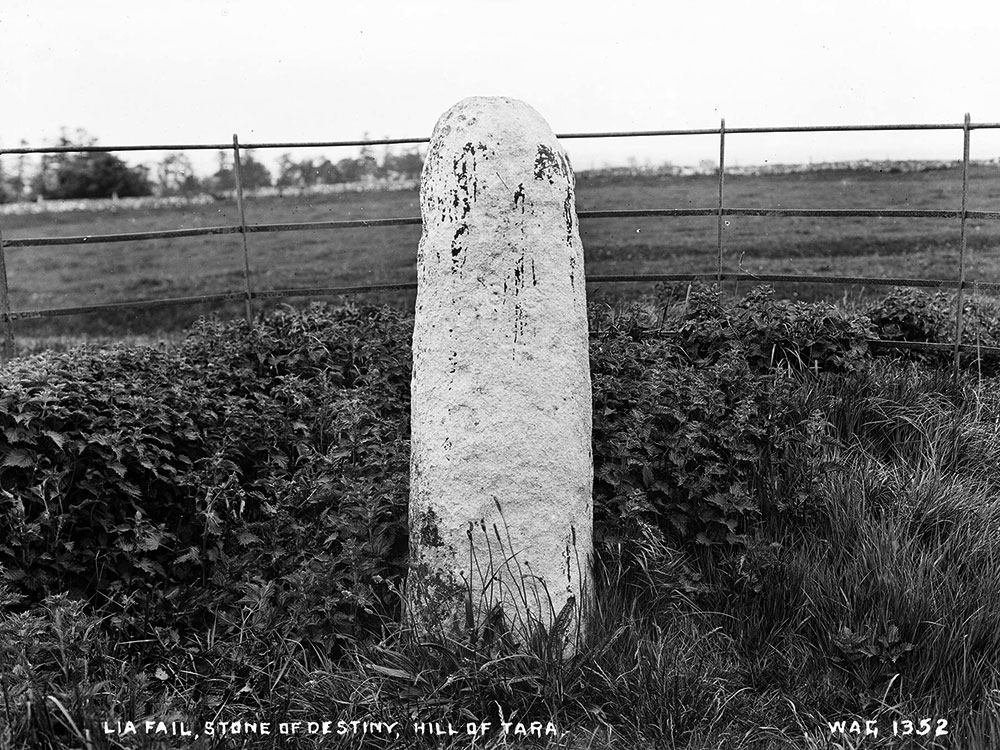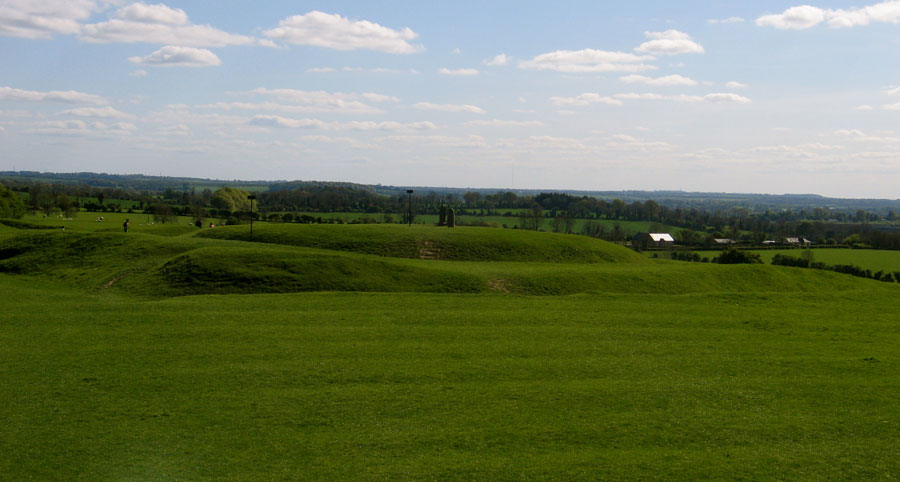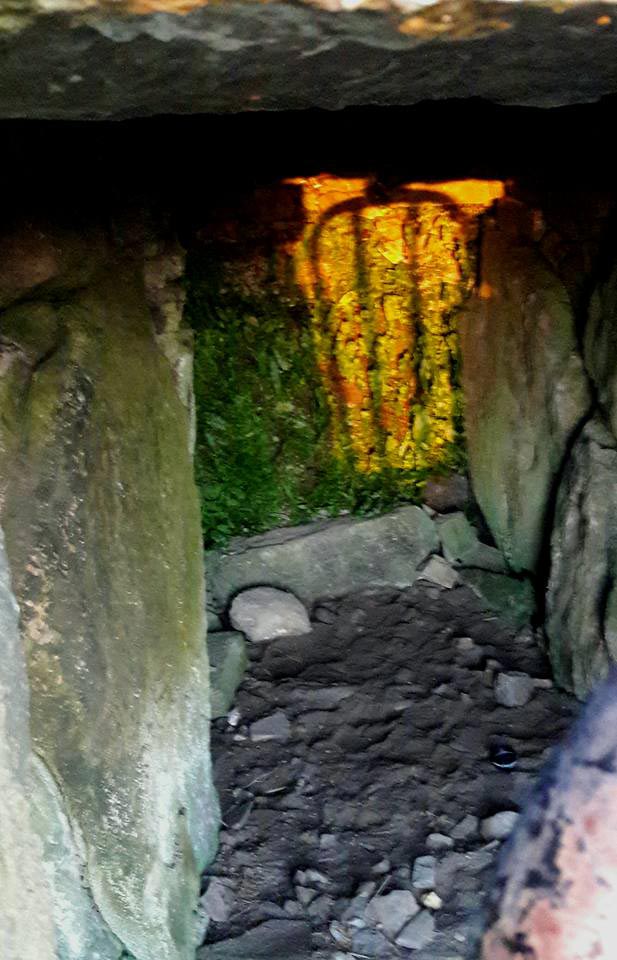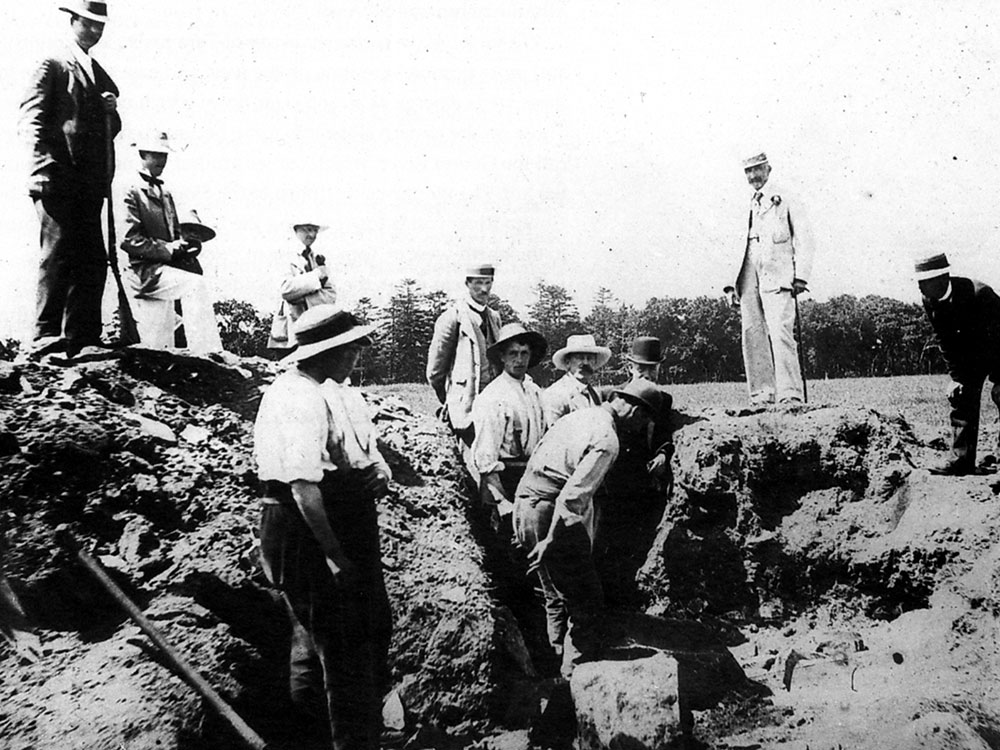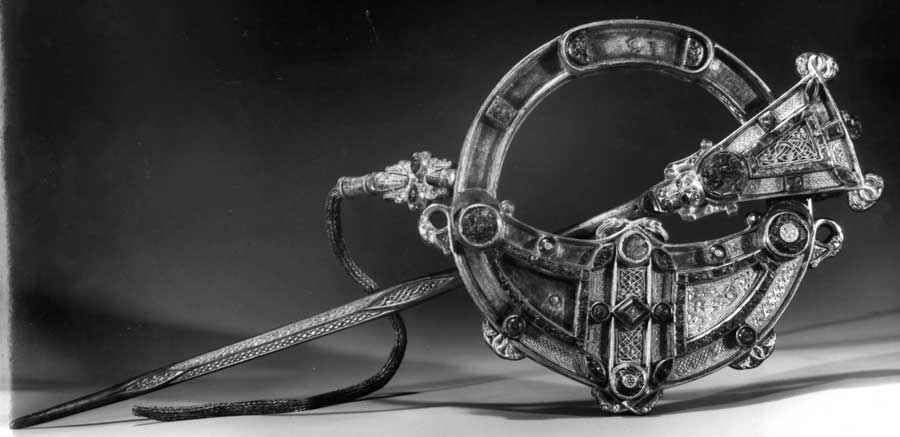The Mythology of Tara
There is a vast abundance of mythological material relating to Tara, and it is mentioned in many of the Irish stories, when events often occur at Samhain. The hill is said to be named after Tea, a goddess. The hill is also associated with Queen Maeve, a landscape goddess, probably imported from Connaught during the medieval times.
The hill is said to be a residence of Lugh of the Long Arm, one of the chief deities of the Tuatha De Danann and hero of the Second Battle of Moytura by Lough Arrow in County Sligo. One of the monuments at Tara is a huge ringfort called Rath Lugh, now partially ploughed out and destroyed, is named after Lugh.
Baile in Scáil: The Phantom's Frenzy
One day Conn was in Tara, after overthrowing the kings. Early in the morning he went up onto the royal rampart of Tara, before sunrise, together with his three druids, Mael and Bloc and Bluicne, and his three filid [poets], Ethain and Corb and Cesarn. For that company used to arise every day to keep watch, lest the men of the sídhe [fairies; Tuatha de Dannan] capture Ireland without his noticing. It is onto the rampart that he used always to go; and he chanced upon a stone beneath his feet and trod upon it. The stone cried out beneath his feet, so that it was heard throughout all Tara, and throughout Brega. Then Conn asked his druids why the stone had cried out, what was its name, whence it had come and whither it would go, and why it had come to Tara. The druid said to Conn that he would not name it to him until fifty-three days had passed. When that number was complete, Conn asked the druid again.
Then the druid said: "Fáil [destiny] is the name of the stone. It is the island of Fáil from which it was brought. It is in Tara of the land of Fáil that it has been placed. It is in the land of Tailtiu that it will remain until the Day of Judgment. And it is in that land that there will be a festive assembly for as long as there is kingship in Tara; and the ruler who does not find it [or leave it?] on the last day of the assembly will be a doomed man in that year. Fáil cried out beneath your feet today," said the druid, "and prophesied. The number of cries which the stone uttered is the number of kings that there will be of your race until the Day of Judgment. It is not I who will name them to you," said the druid.
Then they saw a great mist around them, so that they did not know whither they were going because of the greatness of the darkness which had come upon them. They heard the noise of a horseman coming towards them. "Woe is us," said Conn, "if he brings us into an unknown land!" Then the horseman made three spear casts at them, and the last cast came to them more quickly that the first. "He is setting out to wound a king," said the druid, "whoever makes a cast at Conn in Tara!" Then the horseman ceased his casting, and came up to them, and bade Conn welcome, and invited him to come with him to his dwelling.
Then they went on until they came into a plain, and a golden tree was there. There was a house there with a ridge-pole of findruine [a white alloy], thirty feet in length. They went into the house, and saw a young woman there, and a crown of gold was on her head. There was a silver vat with hoops of gold around it, full of red ale. There was a dipper of gold on its lip, and a cup of gold before her. They saw the scál [phantom] himself in the house, before them on his throne. There was never in Tara a man of his size or his beauty, on account of the fairness of his form and the wondrousness of his appearance.
He answered them and said, "I am not a phantom nor a specter. I have come on account of my fame among you, since my death. And I am of the race of Adam: my name is Lugh son of Eithliu son of Tigernmas. This is why I have come: to relate to you the length of your reign, and of every reign which there will be in Tara." And the girl who sat before then in the house was the Sovereignty of Ireland, and it was she who gave Conn his meal: the rib of an ox and the rib of a boar. The ox rib was twenty-four feet long and eight feet between its arch and the ground. When the girl began to distribute drinks she said, "To whom shall this cup be given?"; and the phantom answered her.
When she had named every ruler until the Day of Judgment, they went into the phantom's shadow, so that they saw neither the enclosure nor the house. The vat and the golden dipper and the cup were left with Conn. And hence are the stories "The Phantom's Dream" and "The Adventure and Journey of Conn".
An episode from the Second Battle of Moytura takes place at Tara, when Lugh, the grandson of Balor of the Evil Eye comes to visit and offers his services in the forthcoming battle to the Tuatha De Danann. To gain entrance he has to undertake a series of challenges and tasks, and eventually bests and defeats every champion in the hall. From this he gets his title, Ildana, or Long Arm, which means Master of All the Arts.Nuada, the High King asks Lugh to lead in his place and take over the directin of the Tuatha de Danann in the coming battle.
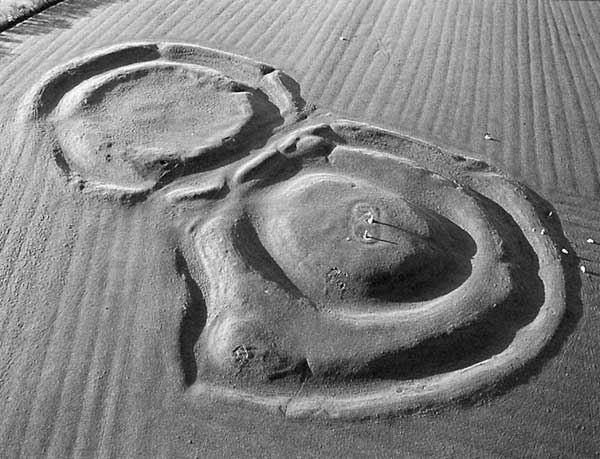
Cormac Mac Art, the most famous of the kings of Tara was born by the Caves of Kesh in County Sligo. Cormac, who was raised by wolves, came to Tara as a youth, and became king by ousting his father's killer when he made a fair judgement in a legal case.
A large barrow, Rath Grainne is named after Cormac's daughter Grainne, who was engaged to Fionn MacChmhal, but famously eloped with a handsome young warrior, Diarmuid instead. Outraged, Fionn gave chase resulting in a whole cycle of tales, and many megalithic monuments being called 'Leaba Dairmuid agus Grainne', as the fleeing couple had to sleep in a different place each night.
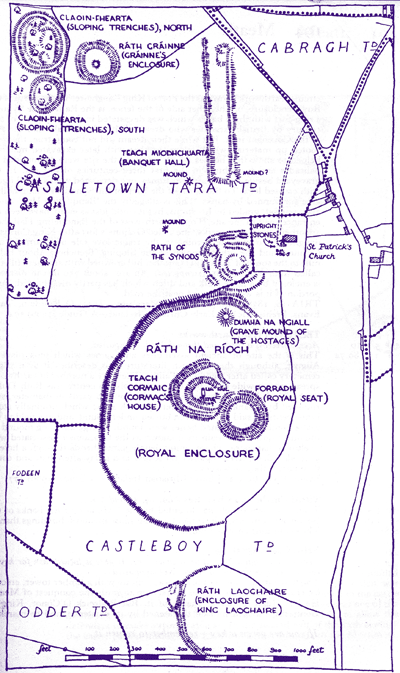
Fionn, Ireland's famous mythical warrior had one of his first adventures at Tara. Applying for membership of the Fianna, he was given the task of keeping guard over Tara at Samhain. Every year, a maolvolent fire-breathing member of the Tuatha De Danann named Ailill would emerge from the Sidhe mound (presumably the Mound of the Hostages) and burn Tara. Fionn defeats the fire breathing Sidhe-dweller and joins the Fianna, before long becoming its most famous leader.

